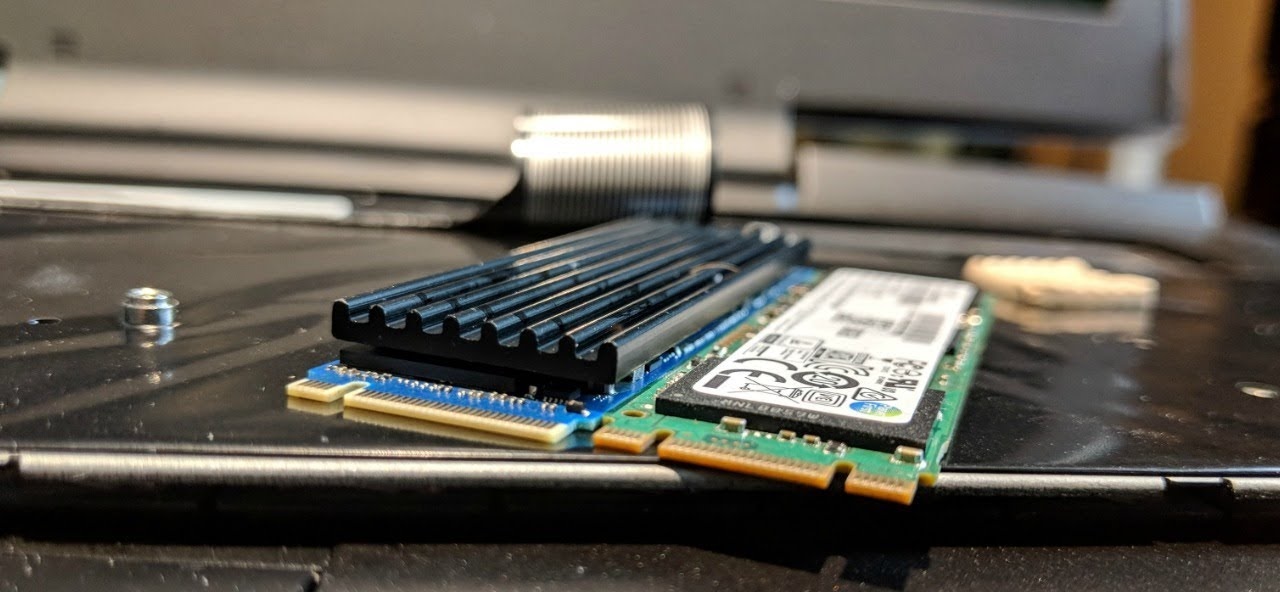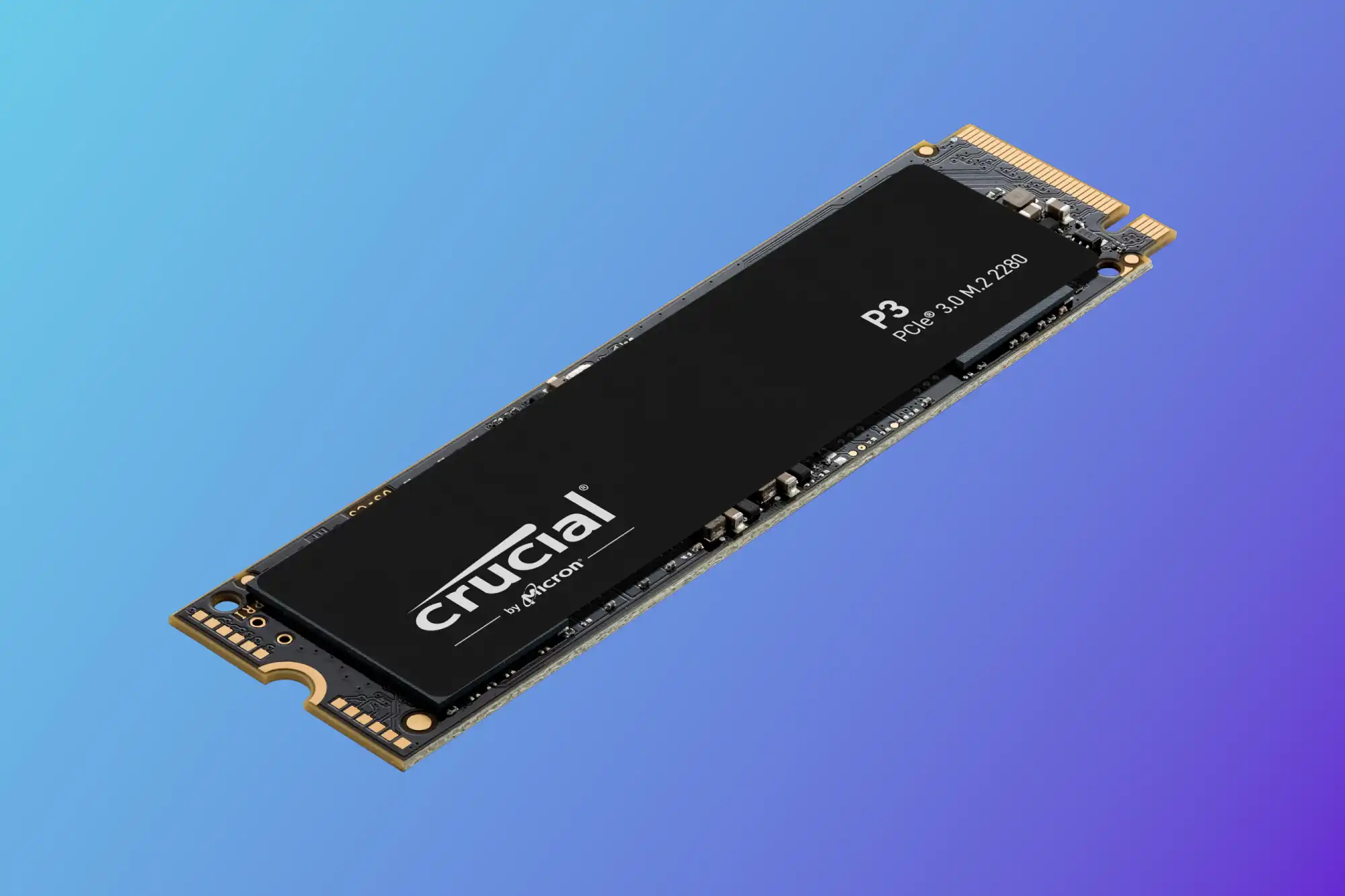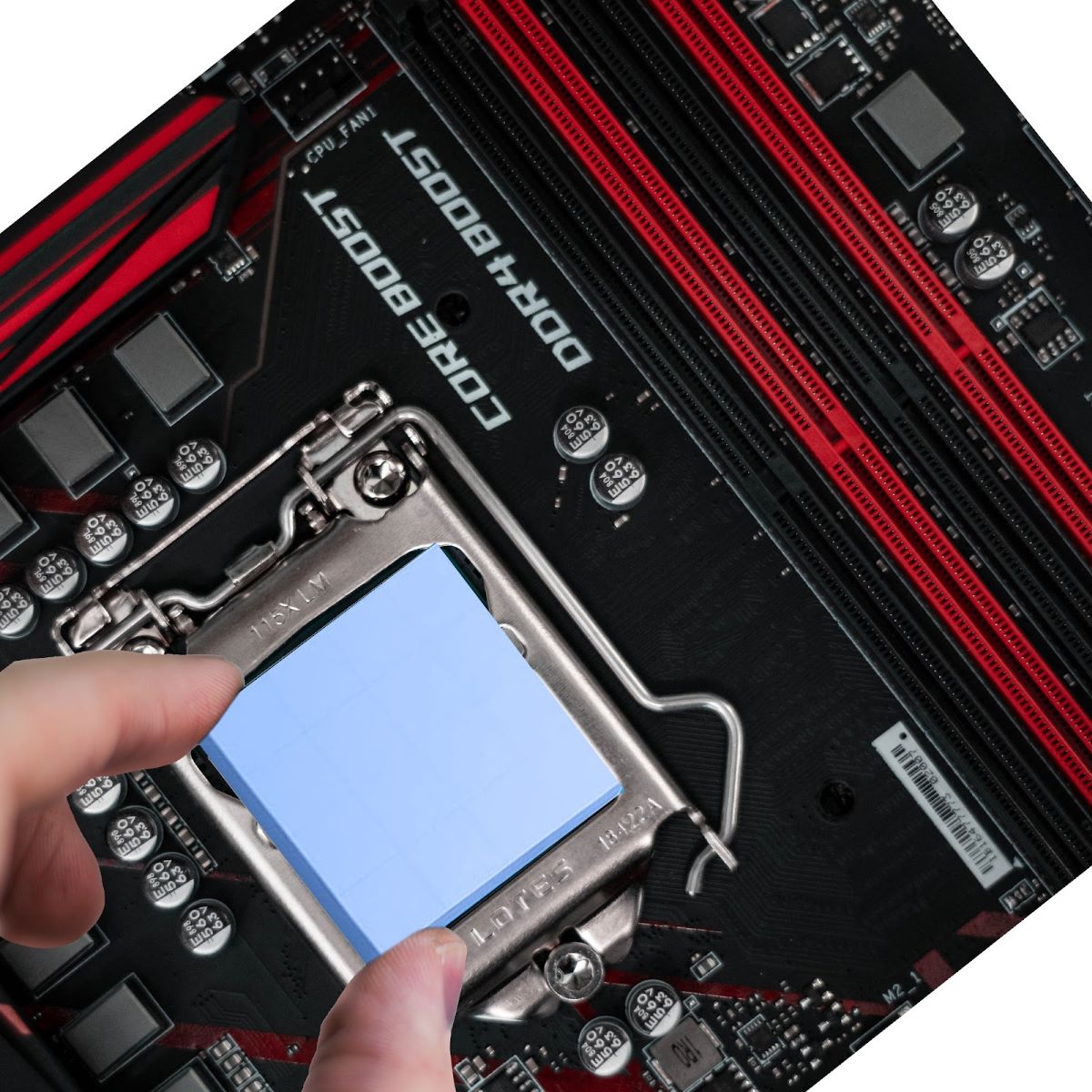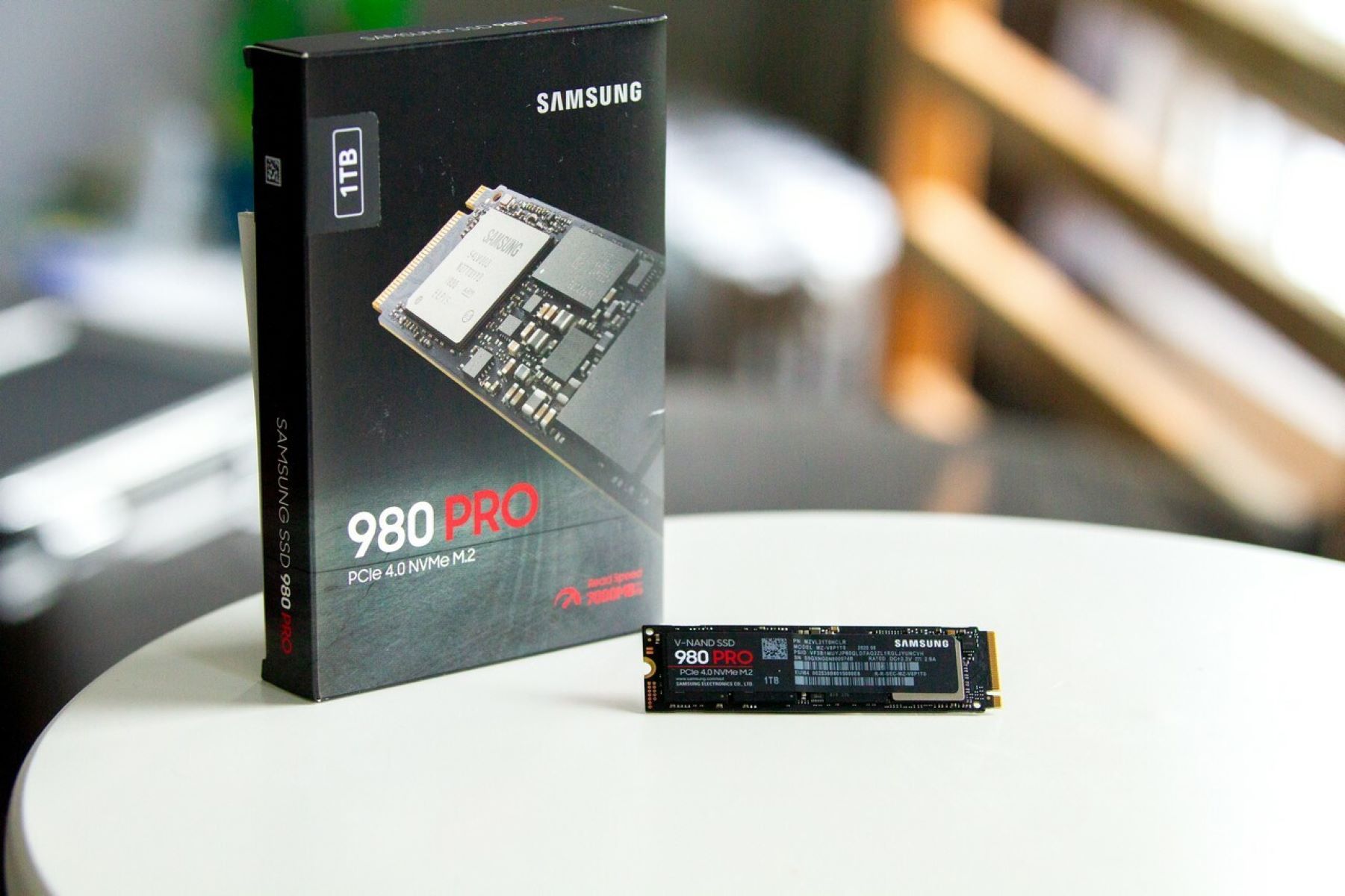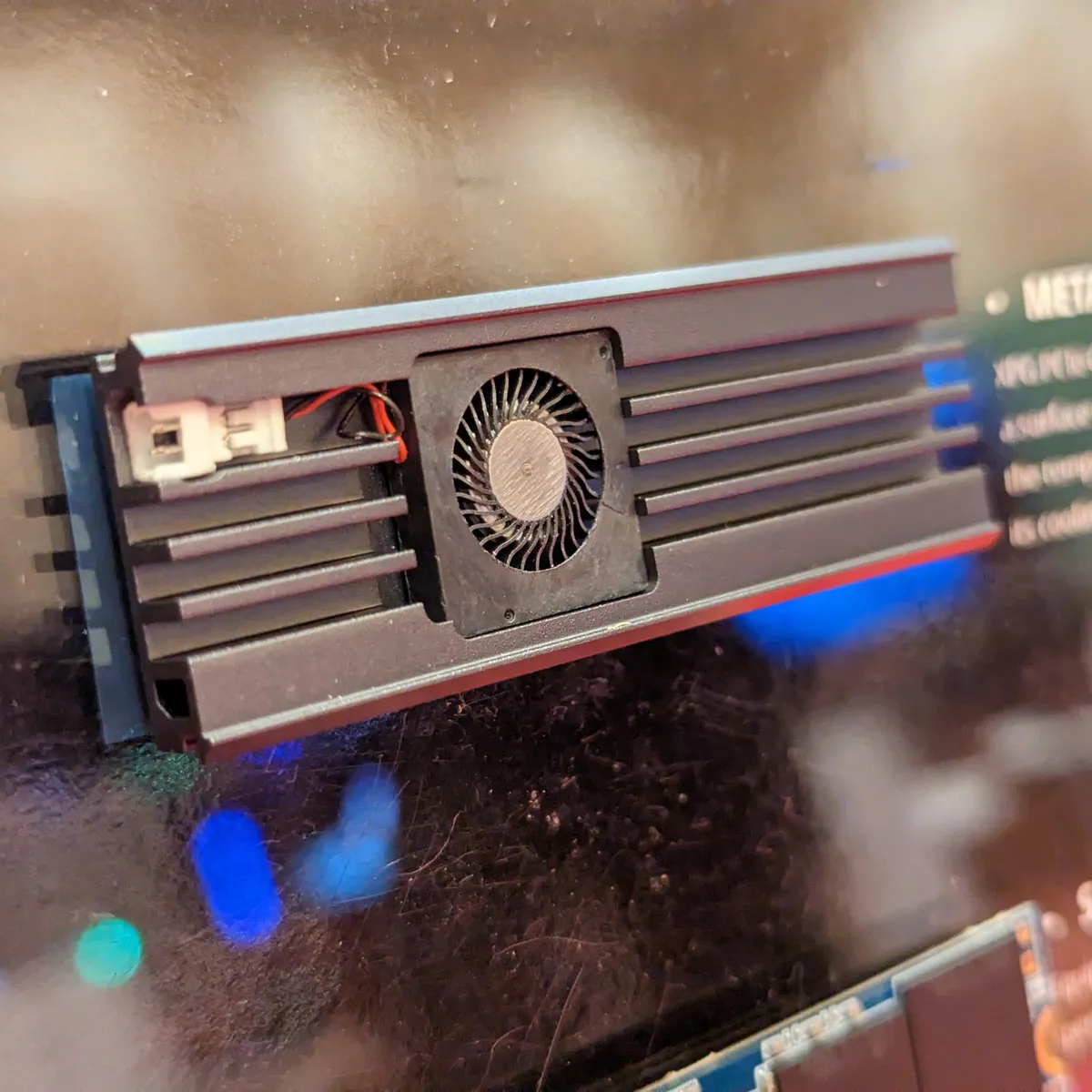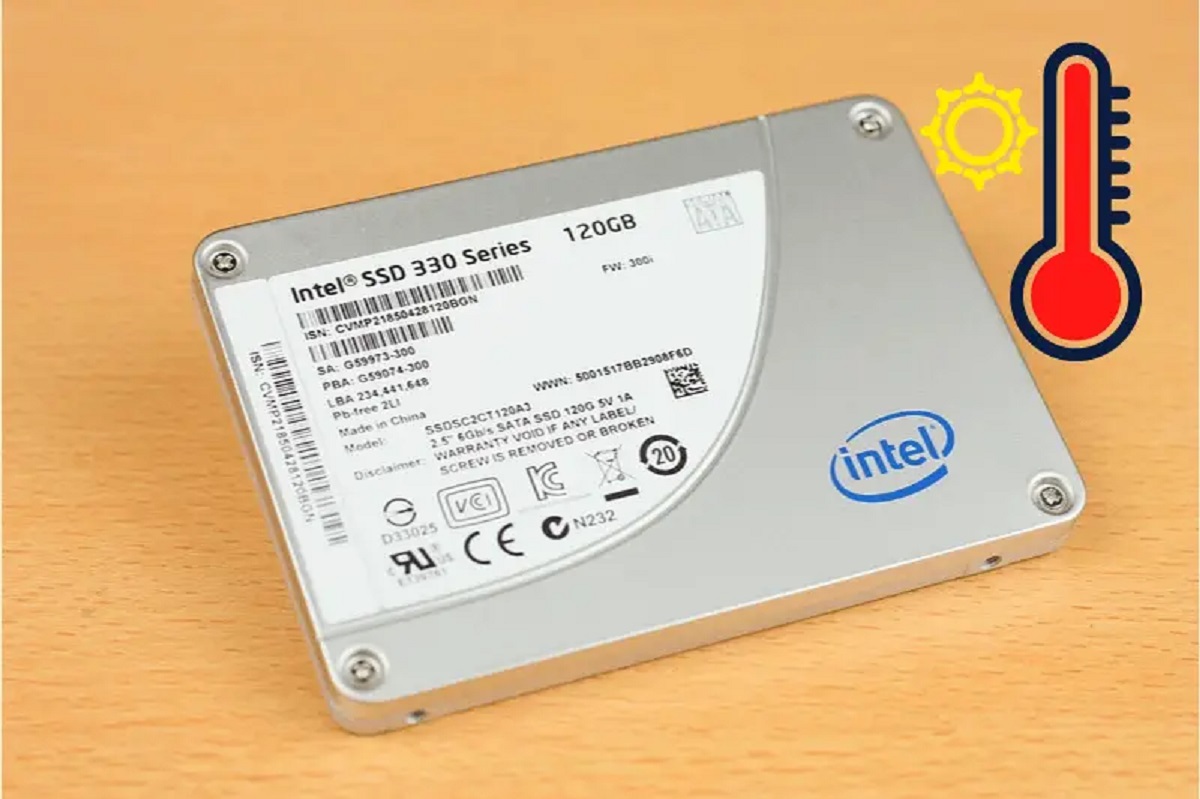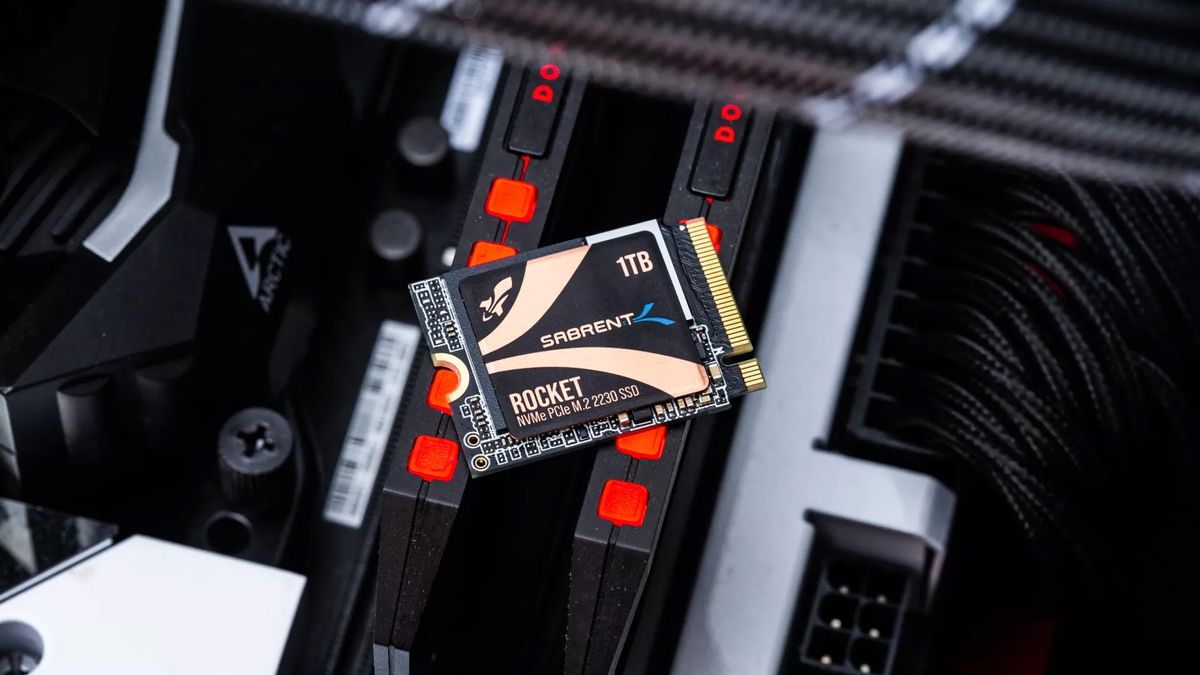Introduction
Welcome to our article on heat sinks for SSDs! If you’re unfamiliar with heat sinks or wondering why SSDs need them, you’ve come to the right place. In this article, we will explore the importance of heat sinks, their benefits, and the different types available for SSDs.
As technology continues to advance, solid-state drives (SSDs) have become a popular choice due to their faster performance and reliability compared to traditional hard disk drives (HDDs). However, like any electronic component, SSDs generate heat during operation. Excessive heat can negatively impact the performance and lifespan of an SSD.
A heat sink, also known as a thermal dissipator, is a device designed to absorb and dissipate heat from an SSD. It consists of a metal or composite material with fins and a large surface area to enhance heat dissipation. By installing a heat sink on an SSD, you can effectively manage the temperature, preventing overheating and ensuring optimal performance.
In the following sections, we will delve into the details of why SSDs require heat sinks, the benefits of using them, the different types available, and how they function. We will also provide tips on choosing and installing a heat sink for your SSD, as well as maintenance and cleaning guidelines.
Whether you’re a computer enthusiast, gamer, or professional who relies on SSD storage, understanding the importance of heat sinks and how they can prolong the lifespan of your SSD is crucial. So, let’s dive in and explore the world of heat sinks for SSDs!
What is a Heat Sink?
A heat sink is a passive cooling device that helps dissipate heat from an electronic component, such as a solid-state drive (SSD). SSDs generate heat during operation, and if not effectively managed, this heat can cause performance degradation and shorten the lifespan of the component.
Heat sinks are typically made of metal, such as aluminum or copper, due to their excellent thermal conductivity properties. They are designed with fins or ridges that increase the surface area, allowing heat to dissipate more efficiently. The increased surface area facilitates the transfer of heat from the SSD to the surrounding air.
Heat sinks work through a process called thermal conduction. When an SSD heats up, the heat is transferred from the electronic components to the heat sink via direct contact. The heat then spreads across the surface of the heat sink, where it is dissipated into the surrounding environment, either through natural convection or with the help of a cooling fan.
The effectiveness of a heat sink depends on its design, material, and the airflow surrounding it. A well-designed heat sink with a larger surface area and efficient airflow can effectively dissipate heat, keeping the SSD at an optimal operating temperature.
In addition to their cooling capabilities, heat sinks also offer physical protection to an SSD. They act as a shield, preventing accidental damage and limiting exposure to external elements such as dust and debris. This protection helps to maintain the longevity and reliability of the SSD.
Overall, a heat sink is an essential component for managing the thermal performance of SSDs. By efficiently dissipating heat and protecting the SSD, heat sinks help ensure the long-term functionality and stability of the device, making them an important consideration for any SSD user.
Why Do SSDs Need Heat Sinks?
SSDs, like many other electronic components, generate heat during operation. This heat is a byproduct of the electrical energy being converted into data storage and retrieval processes. While SSDs are designed to withstand high temperatures, excessive heat can have detrimental effects on their performance and lifespan.
There are several reasons why SSDs need heat sinks:
- Temperature Regulation: SSDs have an optimal operating temperature range, typically between 0 to 70 degrees Celsius (32 to 158 degrees Fahrenheit). If the temperature exceeds the recommended range, it can lead to reduced performance, increased response times, and potential data loss. Heat sinks help regulate the temperature of the SSD by dissipating excess heat, ensuring it stays within the recommended operating range.
- Prevention of Thermal Throttling: Excessive heat can trigger thermal throttling, a protective mechanism in SSDs that slows down the performance to prevent overheating. When an SSD reaches a certain temperature threshold, it automatically lowers its processing speed, resulting in decreased performance. By using a heat sink, the SSD can effectively manage heat dissipation, minimizing the risk of thermal throttling and maintaining consistent performance levels.
- Extended Lifespan: Heat is one of the primary factors that can contribute to the degradation of electronic components over time. Higher temperatures can accelerate the aging process of an SSD, leading to potential failures, data corruption, and reduced lifespan. A heat sink helps to dissipate heat efficiently, reducing the overall stress on the SSD and extending its usable lifespan.
- Consistent Performance: SSDs rely on stable and consistent temperature conditions for optimal performance. Fluctuations in temperature can cause variations in speed and responsiveness. By utilizing a heat sink, the temperature of the SSD can be kept within a narrower range, allowing for more reliable and predictable performance over time.
- Enhanced Reliability: Heat sinks not only regulate temperature but also provide physical protection to the SSD. They act as a barrier, shielding the sensitive electronic components from potential damage caused by external factors such as excessive physical impact, dust, or static electricity. This protection contributes to the overall reliability and longevity of the SSD.
Considering the significant role heat plays in the performance and longevity of SSDs, it is crucial to invest in a quality heat sink to ensure optimal operating conditions for your SSD. The use of a heat sink can effectively manage heat dissipation, regulate temperature, prevent thermal throttling, extend the lifespan, and maintain reliable performance of your SSD.
Benefits of Using a Heat Sink on SSDs
Adding a heat sink to your SSD can provide several benefits that contribute to improved performance, longevity, and reliability. Let’s explore some of the advantages of using a heat sink on SSDs:
- Temperature Regulation: The primary benefit of using a heat sink is effective temperature regulation. Heat sinks absorb and dissipate the excessive heat generated by the SSD, ensuring that it stays within the optimal operating temperature range. This helps prevent overheating and maintains the SSD’s performance at its best.
- Prevention of Throttling: Heat sinks can mitigate the risk of thermal throttling, a mechanism that slows down the SSD’s performance to protect it from overheating. By efficiently dissipating heat, a heat sink helps to keep the SSD operating at consistent speeds, avoiding performance drops caused by thermal throttling.
- Improved Performance: By keeping the SSD at an optimal temperature, a heat sink helps maintain consistent performance levels. Fluctuations in temperature can cause variations in speed and responsiveness. With a heat sink, the SSD operates within a narrower temperature range, leading to more reliable and predictable performance.
- Extended Lifespan: Excessive heat can accelerate the aging process of electronic components, including SSDs. By effectively dissipating heat, a heat sink reduces the overall stress on the SSD and helps extend its lifespan. This contributes to better reliability and longevity, ultimately maximizing the return on your investment.
- Physical Protection: Heat sinks also provide physical protection to the SSD. They act as a barrier, shielding the sensitive electronic components from potential damage caused by external factors such as impacts, dust, and static electricity. This protection enhances the overall durability and reliability of the SSD.
- Compatibility and Easy Installation: Most heat sinks for SSDs are designed to be compatible with standard SSD form factors, making them easy to install and secure onto the SSD without the need for additional tools or modifications. This allows for hassle-free integration into your existing system.
- Improvement in Aesthetics: Beyond their functional benefits, heat sinks can also enhance the overall aesthetic appeal of your SSD. Many heat sinks feature sleek designs and stylish finishes that add a visually pleasing element to your computer system.
By utilizing a heat sink on your SSD, you can experience improved temperature regulation, reduced thermal throttling, enhanced performance, extended lifespan, physical protection, compatibility, and even aesthetic enhancement. These benefits make the investment in a heat sink a worthwhile consideration for anyone looking to optimize their SSD’s performance and longevity.
Different Types of Heat Sinks for SSDs
When it comes to choosing a heat sink for your SSD, you’ll find various types available in the market. Each type offers different design features and materials, catering to different SSD form factors and cooling requirements. Here are some of the most common types of heat sinks for SSDs:
- Aluminum Heat Sinks: Aluminum heat sinks are the most widely used type for SSD cooling. They are lightweight, cost-effective, and provide good thermal conductivity. Aluminum heat sinks come in various shapes and sizes, making them suitable for different SSD form factors. The fins or ridges on aluminum heat sinks allow for efficient heat dissipation.
- Copper Heat Sinks: Copper heat sinks offer superior thermal conductivity compared to aluminum. They are highly effective in dissipating heat but tend to be more expensive and heavier than aluminum counterparts. Copper heat sinks provide excellent cooling performance, making them ideal for high-performance SSDs or systems with more significant thermal loads.
- Graphite Heat Sinks: Graphite heat sinks are a newer option that is gaining popularity in the market. They are light, thin, and offer excellent heat conductivity. Graphite heat sinks are often used in compact SSDs or devices that require efficient cooling in a limited space. They can be especially useful for M.2 SSDs due to their slim design.
- Composite Heat Sinks: Composite heat sinks combine different materials to optimize heat dissipation. These heat sinks may incorporate a combination of aluminum, copper, and other materials, providing a balance between cost, weight, and thermal conductivity. Composite heat sinks offer versatility and can be a suitable choice for various SSD form factors and cooling requirements.
- Fan-Assisted Heat Sinks: Fan-assisted heat sinks incorporate a small fan that helps to increase airflow over the heat sink fins, enhancing heat dissipation. These heat sinks are particularly useful when dealing with high-performance SSDs or situations where passive cooling alone may not be sufficient. Fan-assisted heat sinks offer additional cooling power but may increase noise levels and power consumption.
It’s important to consider the compatibility of the heat sink with your specific SSD form factor and its ability to accommodate the thermal requirements of your SSD. Some manufacturers also offer heat sinks specifically designed for popular SSD models or form factors, ensuring a perfect fit and optimal performance.
Ultimately, the choice of heat sink type will depend on factors such as your SSD model, application requirements, and budget considerations. Whether you opt for an aluminum, copper, graphite, composite, or fan-assisted heat sink, the primary goal is to effectively dissipate heat and maintain the optimal operating temperature for your SSD.
How Does a Heat Sink Work on an SSD?
When a heat sink is installed on an SSD, it helps to effectively manage the temperature and dissipate the heat generated during operation. Let’s take a closer look at how a heat sink works on an SSD:
1. Heat Absorption: The heat sink is designed to come into direct contact with the SSD. It absorbs the heat generated by the electronic components of the SSD through this contact. The heat is transferred from the SSD to the heat sink through conduction.
2. Heat Spreading: Once the heat is absorbed by the heat sink, it spreads across the surface of the heat sink. The heat sink is designed with fins, ridges, or other features that increase its surface area. These features facilitate better heat distribution, ensuring that the heat is spread out evenly across the heat sink.
3. Heat Dissipation: As the heat spreads across the surface of the heat sink, it is exposed to the surrounding air. The increased surface area of the heat sink allows for better interaction between the heat and the air. This process facilitates heat dissipation, as the heat is transferred from the heat sink to the surrounding environment.
4. Convection: Heat dissipation occurs mainly through natural convection. The heated air surrounding the heat sink rises, creating a flow of air. Cooler air then replaces the rising warm air, and the cycle continues. This natural convection process helps to remove the heat from the heat sink and maintain a lower temperature around the SSD.
5. Cooling Fan (if applicable): In some cases, heat sinks may also incorporate a cooling fan to enhance heat dissipation. The fan assists in increasing the airflow over the heat sink fins, expediting the cooling process. This can be particularly useful for high-performance SSDs that generate more heat or in situations where passive cooling alone may not be sufficient.
By effectively absorbing, spreading, and dissipating heat, a heat sink assists in maintaining a stable temperature for the SSD. It prevents the buildup of heat that could lead to performance issues, thermal throttling, and potential damage to the SSD’s electronic components. The use of a heat sink ensures optimal operating conditions, allowing the SSD to perform reliably and maximize its lifespan.
Considerations When Choosing a Heat Sink for Your SSD
When selecting a heat sink for your SSD, it is essential to consider various factors to ensure optimal performance and compatibility. Here are some key considerations to keep in mind:
- SSD Form Factor: Different SSD form factors, such as M.2, SATA, or PCIe, require specific heat sink designs to ensure proper fitting and cooling efficiency. Check the compatibility of the heat sink with your SSD’s form factor before making a purchase.
- Thermal Conductivity: Look for a heat sink with high thermal conductivity materials for efficient heat dissipation. Aluminum and copper are common choices due to their good thermal properties. Copper generally has better thermal conductivity but may be more expensive than aluminum.
- Heat Sink Design: Consider the design of the heat sink, including its size, fin density, and surface area. A larger heat sink with more fins generally provides better heat dissipation. A well-designed heat sink with an optimized layout can enhance cooling performance.
- Airflow: Assess the airflow conditions within your computer system. If your system has limited airflow, consider a heat sink with a design that promotes better ventilation. Some heat sinks come with integrated fans for additional airflow, which can be particularly beneficial in systems with restricted airflow.
- Mounting Method: Check the mounting method of the heat sink to ensure it can be securely attached to your SSD. Some heat sinks use thermal adhesive pads, while others may require screws or brackets for installation. Consider the ease of installation and compatibility with your SSD mounting options.
- Compatibility with Other Components: Take into account the clearance space around your SSD and adjacent components. Ensure that the chosen heat sink does not interfere with other components or obstruct airflow in your system. It’s important to maintain a balance between cooling efficiency and compatibility with other hardware.
- Noise Levels: If you opt for a heat sink with a fan, consider the noise levels generated by the fan. Look for heat sinks with low-noise fans or adjustable fan speed control to minimize overall system noise while maintaining adequate cooling.
- Brand Reputation and Reviews: Research and evaluate the reputation and reviews of different heat sink brands. Opt for reputable brands that have a track record of producing reliable and effective cooling solutions. Reading user reviews can provide insights into the performance and reliability of specific heat sink models.
By carefully considering these factors, you can choose a heat sink that is compatible with your SSD, offers efficient heat dissipation, and suits your specific cooling requirements. Taking the time to select the right heat sink ensures that your SSD operates at optimal temperatures, reducing the risk of performance issues and extending its lifespan.
Installation Process of a Heat Sink on an SSD
Installing a heat sink on your SSD is a relatively straightforward process. Here’s a step-by-step guide to help you through the installation:
- Prepare the Necessary Tools: Gather the tools needed for the installation, which may include a screwdriver, thermal paste (if required), and any accompanying mounting brackets or screws.
- Ensure Proper Static Discharge Precautions: Before handling the SSD or heat sink, ensure you are properly grounded to prevent any electrostatic damage. This can be done by touching a grounded metal object or using an anti-static wrist strap.
- Clean the SSD Surface: If there is any existing thermal paste or adhesive residue on the SSD’s surface, clean it off using isopropyl alcohol and a lint-free cloth. Ensure the surface is clean and dry before proceeding.
- Apply Thermal Paste (if required): If the heat sink requires thermal paste for better heat transfer between the SSD and the heat sink, apply a pea-sized amount of thermal paste onto the center of the SSD’s surface. Spread it evenly using a plastic spatula or a clean finger, ensuring it covers the entire surface evenly. Be cautious not to apply an excessive amount of thermal paste.
- Attach the Heat Sink: Carefully align the heat sink with the SSD’s mounting holes or thermal pads. If the heat sink has screw holes, secure it to the SSD using the provided screws or mounting brackets. Ensure the heat sink is firmly and evenly attached to the SSD.
- Double-Check the Positioning: Once the heat sink is securely attached, double-check its positioning to ensure it is aligned correctly with the SSD’s components. Make any necessary adjustments to ensure it does not interfere with adjacent components.
- Reassemble the System: Once the heat sink is installed, reassemble your computer system, ensuring all cables and connectors are properly connected. Close the case and secure it with the appropriate screws.
- Power Up and Monitor: Power up your computer system and monitor the SSD’s temperature during operation. Use temperature monitoring software to ensure the heat sink is effectively managing the SSD’s temperature and keeping it within the optimal operating range.
It’s important to refer to the specific installation instructions provided by the heat sink manufacturer, as the process may vary slightly depending on the design and model of the heat sink. Following the manufacturer’s guidelines will ensure a successful installation and optimal performance of the heat sink on your SSD.
Maintenance and Cleaning Tips for SSD Heat Sinks
To ensure the optimal performance and longevity of your SSD heat sink, regular maintenance and cleaning are essential. Here are some tips to keep your SSD heat sink in top condition:
- Periodic Inspection: Regularly inspect the heat sink for any signs of dust, debris, or blockages. Check for loose screws or any physical damage that may affect its cooling performance.
- Dust Removal: Dust and debris can accumulate on the heat sink fins over time and restrict airflow. Use compressed air or a soft brush to gently remove any dust particles from the heat sink surface. Ensure the computer is powered off and unplugged before performing any cleaning.
- Thermal Paste Replacement: If your heat sink requires thermal paste, it is recommended to replace it every 1 to 2 years to maintain optimal heat transfer between the SSD and the heat sink. Follow the manufacturer’s instructions for proper removal and reapplication of thermal paste.
- Check for Fan Operation (If Applicable): If your heat sink incorporates a fan, ensure that the fan is operating smoothly and not producing excessive noise. Clean or replace the fan if necessary to maintain proper airflow.
- Avoid Liquid Contact: When cleaning the heat sink, avoid using excessive liquids that could seep into the SSD or other sensitive components. Instead, use dry cleaning methods or lightly dampened wipes to remove any stubborn residue.
- Avoid Physical Damage: Handle the heat sink with care to prevent any physical damage. Avoid placing excessive pressure on the heat sink fins or twisting the heat sink during installation or maintenance.
- Monitor SSD Temperatures: Regularly monitor the temperature of your SSD using temperature monitoring software. This helps you identify any significant changes in operating temperatures, allowing you to address potential cooling issues promptly.
- Preventive Maintenance: Along with cleaning the heat sink, ensure that your computer system is well-maintained overall. Keep the inside of the computer case dust-free, maintain adequate airflow, and regularly check and clean fans and air vents.
- Follow Manufacturer Guidelines: Always refer to the specific maintenance guidelines provided by the heat sink manufacturer. They may have specific instructions for cleaning, maintenance, or troubleshooting that are specific to their product.
Following these maintenance and cleaning tips will help ensure that your SSD heat sink continues to provide effective cooling and optimal performance. Regular inspections and maintenance will keep the heat sink free from debris, prevent overheating, and prolong the lifespan of both the heat sink and the SSD.
Conclusion
Heat sinks play a vital role in managing the temperature of solid-state drives (SSDs), ensuring optimal performance, and extending their lifespan. By effectively absorbing, spreading, and dissipating heat, heat sinks prevent overheating and minimize the risk of performance issues, thermal throttling, and potential damage to the SSD’s electronic components.
When choosing a heat sink for your SSD, consider factors such as SSD form factor compatibility, thermal conductivity, design, compatibility with other components, and noise levels. Match the heat sink to your specific SSD model and requirements to ensure optimal cooling efficiency.
The installation process of a heat sink on an SSD involves preparing the necessary tools, ensuring proper static discharge precautions, cleaning the SSD surface, applying thermal paste (if required), attaching the heat sink securely, and reassembling the system. Following the manufacturer’s instructions is crucial for a successful installation.
Regular maintenance and cleaning of the heat sink are essential to maintain its performance. Periodic inspections, dust removal, thermal paste replacement, and checking fan operation (if applicable) are some practices to keep the heat sink in top condition. Preventive maintenance of the entire computer system, including cleanliness and proper airflow, is also crucial for optimal cooling.
In conclusion, a heat sink is a valuable addition to an SSD, providing effective temperature regulation, prevention of thermal throttling, improved performance, extended lifespan, physical protection, and compatibility. By investing in a quality heat sink and following proper installation, maintenance, and cleaning practices, you can ensure ideal operating temperatures and maximize the performance and reliability of your SSD.







